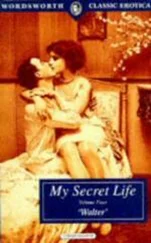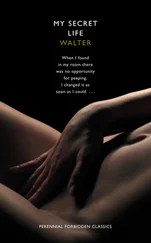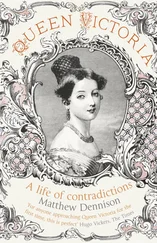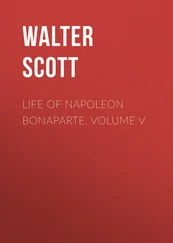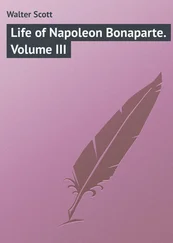Sickert returned to London exhilarated. He was, as Maggie Cobden reported, ‘blooming’. 56 Under Whistler’s tutelage he had at last discovered an outlet for his energies. Not that he was entirely free from constraints. He still had no source of income, and perhaps it was to earn money that he undertook several days’ work for E. W. Godwin, researching historical costume designs at the British Museum. 57 And it may have been for the same reason that, later in the year, he gave some home tuition to the children of Henry Irving. 58
If things were going well for him, they were faring poorly for Nellie. She was ill again in the autumn, suffering what seems to have been a regular seasonal relapse. 59 She went down to Margate to recuperate, lodging in the smart Cliftonville area of the town. 60 Sickert visited her there and loved the place. The Kentish resort with its mid-Victorian flavour, its bracing seawater baths and no less bracing taint of cockney vulgarity – not to mention its associations with Turner – became one of his favoured sites. It also proved beneficial for Nellie. She rallied enough to return to London by the end of the year and throw herself into arrangements for the Suffrage Ball in the coming spring. 61
Sickert had his own arranging to do. All his time was taken up with the preparations for Whistler’s forthcoming exhibition at the Fine Art Society, a second showing of Venice etchings. 62 There was a mad dash to get everything ready on time. For Sickert, it was an accelerated apprenticeship in the art of printing, as Whistler, through selective inking and wiping and other tricks of the trade, strove to imbue each individual print with its own unique character. The work, though hard, was not without its moments of humour. Sickert recalled once dropping the copper plate he was working on. “‘How like you!” said Whistler. Five minutes afterwards the improbable happened. Whistler, who was never clumsy, dropped one himself. There was a pause. “How unlike me!”’ * 63 In their work they were distracted by the reappearance of Oscar Wilde, who returned from his American tour at the beginning of January 1883 and was much at Tite Street, before he headed off at the end of the month to spend his earnings on a three-month stay in Paris. 64
Despite such diversions, all was ready for the show’s opening on 17 February. For Whistler, an exhibition was not merely a gathering of pictures but a quasi-theatrical event. Every detail had to be addressed. An ‘amazing’ catalogue was produced that quoted some of his critics’ most hostile comments, and the Fine Art Society was redecorated in shades of yellow. For the private view the colour scheme extended to the flowers, the assistants’ neckties, and even Whistler’s socks. 65 It is not known what sartorial concession Sickert made to the occasion, but he was, of course, there. He introduced Brandon Thomas to Whistler, and was thrilled when the actor commissioned a painting from his master. 66
The opening of the show brought Sickert relief from his studio duties. He was, as his mother put it, ‘somewhat free again and able to get on with his own work’. 67 Inspired by Whistler’s example he began to etch his own series of London scenes. † And though he continued to attend regularly at Tite Street, he took a room nearby at 38 Markham Square in order to have some measure of independence. 68
Whistler was not entirely approving. He soon found new work for his pupil to do. At the end of April he entrusted Sickert with the task of escorting his painting Arrangement in Grey and Black: Portrait of the Artist’s Mother over to Paris for exhibition at the Salon. Besides the picture, Sickert also took with him copies of the ‘amazing’ catalogue and letters of introduction to Manet and Degas. He was to say to them that Whistler, too, was ‘amazing’. The route was via Dieppe. Sickert retained a clear recollection of ‘the little deal case’ containing his precious charge being hoisted from the hold of the boat and ‘swinging from a crane against the starlit night and the sleeping houses of the Pollet’. 69 In Paris, he lodged at the Hôtel Voltaire as the guest of Oscar Wilde, to whom he had also been instructed to show the catalogue. ‘Remember,’ Whistler informed Wilde in a covering note, ‘he travels no longer as Walter Sickert – of course he is amazing – for does he not represent the Amazing One.’ 70 Such magisterial condescension was not entirely apt. Sickert, naturally gifted with a remarkable degree of social confidence, had learnt even more poise at Tite Street. He was no mere cipher.
Having seen Whistler’s painting safely delivered to the Salon, he called on Manet but found the artist too ill to receive visitors. Standing in the hallway of the painter’s flat, Sickert only heard his voice, ‘through the open door of his bedroom’, as he instructed his brother, Eugene, to take ‘Whistler’s friend round to my studio and show him my pictures’. 71 Although Sickert left no contemporary record of the visit, he was certainly impressed by what he saw. Manet’s large painting of the bar of the Folies Bergère was there, though Sickert’s most vivid memories were of a pastel portrait of the Irish writer George Moore, and a picture showing ‘Rochefort’s escape from New Caledonia’. He came away with a general impression of freshness, vitality, and excellence. He recognized Manet’s affinities with Whistler – his debt to Velásquez, his freshness of touch, his command of the prima method of painting. And though, such was his loyalty, he hesitated to rank him with ‘the Master’, he acknowledged him as ‘a brilliant and powerful’ artist, an ‘executant of the first rank’. 72
Sickert called next on Degas at his flat in rue Pigalle. It was to prove a momentous meeting. Degas was then forty-eight. A crusty bachelor with an acerbic wit, he was developing a reputation as a curmudgeon, if not a recluse. There were few artists in Paris who were not a little scared of him and of his sharp-edged tongue. Sickert, if he knew anything of this, was undaunted by it. Many years later, he gave an account of his visit through what he described as the ‘piquant distorting media’ of Oscar Wilde’s recollection of Degas’ story of the incident:
Degas alleged himself to have been disturbed too early in the morning, by a terrific knocking, and ringing. He had opened the door himself, his head tied up in a flannel comforter. ‘Here at last,’ he said to himself, ‘is the Englishman who is going to buy all my pictures’. ‘Monsieur’, he had said, ‘je ne peux pas vous recevoir. J’ai une bronchite qui me mène au diable. Je regrette’. ‘Cela ne fait rien’, the Englishman is here made to say. ‘Je n’aime pas la conversation. Je viens voir vos tableaux. Je suis l’élève de Whistler. Je vous présente le catalogue de mon maître’ … The visitor had then entered, and proceeded, silently, and with great deliberation to examine all the pictures in the flat, and the wax statuettes under their glass cases, keeping the invalid standing the while, and had ended by ‘Bien. Très bien. Je vous donne rendezvous demain à votre atelier à dix heures’.
The facts, Sickert admitted, were ‘singularly exact’. 73
Sickert, true to his intention, followed up the call with a visit to Degas’ studio in the rue Fontaine St Georges. The artist’s consternation at his assured young visitor seems to have quickly dissolved into amusement. Degas’ ‘rollicking and somewhat bear-like sense of fun’ came to the fore. It became his joke to regard Sickert as ‘the typical and undiluted’ Englishman, the authority on all matters of English life and etiquette. He bombarded him with stories of other Englishmen he had known and the foolish things they had said, and quizzed him upon points of national custom. But Degas must have recognized, too, Sickert’s real interest in art, and they found common ground in their admiration of Charles Keene. 74
Читать дальше




